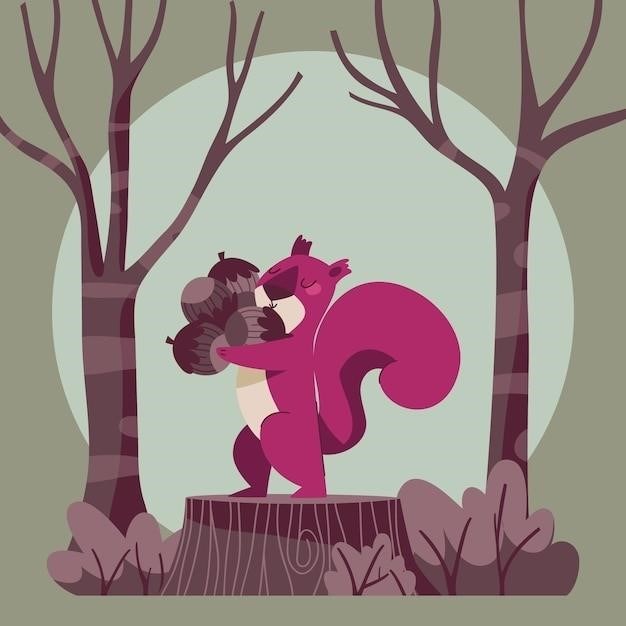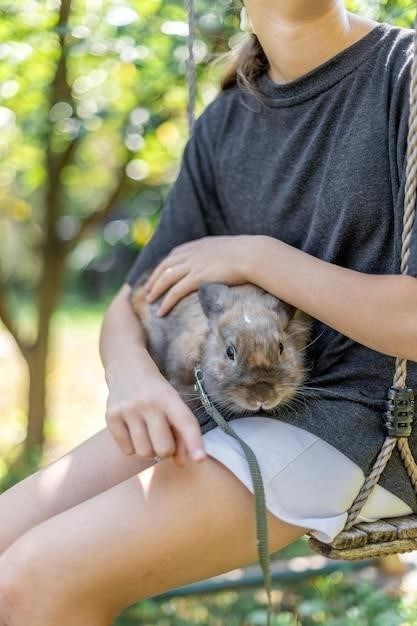Finding a Baby Squirrel⁚ Initial Steps
Observe the squirrel carefully. Is it injured, alone, or near its nest? Note its size and condition. If unharmed and near a nest, leave it; the mother may return. If injured or truly orphaned, proceed to the next steps.
Assessing the Situation
Before intervening, carefully observe the baby squirrel’s surroundings. Is it near a nest? If so, the mother might be nearby. Check for injuries; bleeding, broken bones, or wounds require immediate attention. Note the squirrel’s behavior – is it lethargic, crying excessively, or unresponsive? Assess its body temperature; a cold squirrel needs immediate warming. Consider the environment; are there predators present? Is the location safe? Document your observations to relay to a rehabilitator. Remember that hasty intervention might disrupt a natural process, causing more harm than good. Accurate assessment guides appropriate action.
Immediate Care⁚ Keeping the Squirrel Warm and Safe
Gentle handling is crucial. Use a soft cloth or towel to carefully pick up the squirrel, minimizing stress. Place it in a small, well-ventilated cardboard box lined with soft, clean material like a fleece blanket (avoid terrycloth). A heating pad set on low, or a warm water bottle wrapped in a towel, can provide warmth; never place the squirrel directly on the heat source. Keep the box in a quiet, dark location away from drafts and noise. Avoid giving food or water until professional guidance is received. Monitor the squirrel’s condition closely; if its condition worsens before contacting a rehabilitator, seek immediate veterinary help. Remember, temporary care is only until professional help arrives.

Contacting a Wildlife Rehabilitator
Finding a licensed wildlife rehabilitator is vital. Search online for local rehabilitators or contact your local animal shelter or wildlife agency for referrals. Timely intervention is key for the squirrel’s survival.
Locating a Rehabilitator in Your Area
Begin your search online using terms like “wildlife rehabilitator [your state/city]” or “squirrel rescue [your state/city]”. Check websites for local animal shelters, humane societies, or wildlife centers; many have resources or contacts for wildlife rehabilitation. If online searches prove fruitless, contact your local veterinarian; they may have connections to wildlife rehabilitators in the area. Remember to confirm the rehabilitator’s license and experience with squirrels before entrusting the baby to their care. Prompt action is crucial; delays can significantly impact the squirrel’s chances of survival. Consider calling several options to ensure availability and a quick response.
Preparing for Transport
Gently place the baby squirrel in a small, well-ventilated container. A cardboard box lined with soft, clean material like a towel or fleece works well. Avoid using terrycloth, as the loops can be dangerous; Keep the box warm using a heating pad set on low (underneath, never directly on the box) or a warm water bottle wrapped in a towel. If possible, include a small amount of the squirrel’s original nesting material. Transport the box securely in your vehicle, ensuring it remains warm and stable during travel. Minimize handling to reduce stress; speak calmly and quietly to reassure the baby squirrel. Remember, speed is key; get the squirrel to the rehabilitator as soon as possible.

Baby Squirrel Care (Temporary)⁚ A Guide for Emergencies
This section offers temporary care instructions until professional help arrives. Focus on keeping the baby squirrel warm, safe, and hydrated. Immediate transfer to a wildlife rehabilitator is crucial for its survival.
Feeding a Baby Squirrel
Feeding a baby squirrel requires specialized knowledge and formula. Do not attempt to feed it cow’s milk or other unsuitable substitutes; this can be fatal. The appropriate formula, often a commercially available pet store product or one recommended by a wildlife rehabilitator, should be warmed to body temperature. Use a syringe or eyedropper to feed small amounts frequently, mimicking the mother’s nursing pattern. The feeding schedule varies with age; younger squirrels need more frequent, smaller feedings. Observe the squirrel closely for signs of distress or digestive issues. Never overfeed; this can lead to aspiration pneumonia. Always consult with a wildlife rehabilitator or experienced professional for precise instructions and guidance on the appropriate formula, feeding schedule, and volume to administer based on the squirrel’s age and condition. Improper feeding can have severe consequences for the animal’s health and development.
Housing and Environmental Needs
Providing appropriate housing is crucial for a baby squirrel’s well-being. A small, well-ventilated box lined with soft, clean material like fleece (avoid terrycloth, as it can be dangerous) is suitable. Maintain a consistent temperature; a heating pad set on low, under a portion of the box, can help regulate warmth, but ensure there’s a cooler area for the squirrel to move to if it gets too hot. The box should be placed in a quiet, dark location, minimizing disturbance. Avoid excessive handling; stress can be harmful. Cleanliness is paramount; regularly change soiled bedding to prevent disease. Provide enrichment, such as small, safe toys (never anything that could pose a choking hazard) to stimulate natural behaviors. Remember, this is temporary housing until transfer to a licensed wildlife rehabilitator; their expertise guarantees the best long-term care.
Understanding Baby Squirrel Development
Baby squirrel development varies greatly by age. Knowing the stages helps determine appropriate care and recognize potential problems. Size, fur, eye opening, and motor skills indicate age and health. Professional guidance from a rehabilitator is essential.
Age and Development Stages
Newly born squirrels are pink and hairless, completely dependent on their mother. Within a week, they begin to develop fur. By two weeks, they have more fur and their eyes start to open. Three-week-olds are more active, though still unable to move far. At four weeks, they can climb and explore their surroundings but need constant care and feeding. Around six to eight weeks, they’re weaned and can eat solid foods with help. Reaching eight to ten weeks, they’re much more independent, practicing climbing and jumping. Precise age determination requires careful observation of physical characteristics and behavior, best done by experienced wildlife rehabilitators.
Recognizing Signs of Illness or Injury
A healthy baby squirrel is alert, responsive, and active (age-appropriately). Signs of illness include lethargy, labored breathing, unusual discharge from eyes or nose, diarrhea, dehydration (sunken eyes, lack of skin elasticity), and failure to thrive (lack of weight gain). Injuries may be obvious, such as bleeding wounds or broken bones. Less visible problems include parasites (maggots, fleas), which may require veterinary intervention. If a baby squirrel shows any of these symptoms, immediate attention from a licensed wildlife rehabilitator is crucial. Do not attempt to treat injuries or illnesses yourself; improper care can worsen the situation and lead to death.
Long-Term Care and Release
Licensed wildlife rehabilitators provide specialized care, including weaning, socialization, and disease prevention, preparing the squirrel for a successful return to its natural habitat.
The Role of Wildlife Rehabilitators
Wildlife rehabilitators are crucial for the long-term survival of orphaned or injured baby squirrels. These professionals possess the expertise and resources to provide specialized care, ensuring the squirrel’s health and development. They offer appropriate nutrition, often using specialized formulas, and maintain sanitary housing conditions to prevent disease. Rehabilitators also address any injuries or illnesses the squirrel may have, utilizing veterinary care when necessary. Furthermore, they play a vital role in socializing the squirrel, preparing it for life in the wild. This socialization process is essential for the squirrel’s ability to survive independently once released. Without the intervention of trained rehabilitators, the chances of a baby squirrel’s survival are significantly diminished.
Releasing the Squirrel Back into the Wild
Releasing a rehabilitated baby squirrel back into its natural habitat is a critical and carefully planned process. The timing is crucial, dependent on the squirrel’s age, weight, and overall health, ensuring it can forage and survive independently. Rehabilitators assess the squirrel’s ability to climb, find food, and evade predators before release. The release location is also vital; it should be a suitable habitat with a sufficient food source and minimal human interference. A gradual release, involving a short period in a large enclosure before complete freedom, can sometimes be beneficial. Post-release monitoring, though challenging, can provide valuable data on the squirrel’s adaptation and survival rate. The success of the rehabilitation program hinges on this final stage, ensuring the squirrel’s integration into its natural environment.